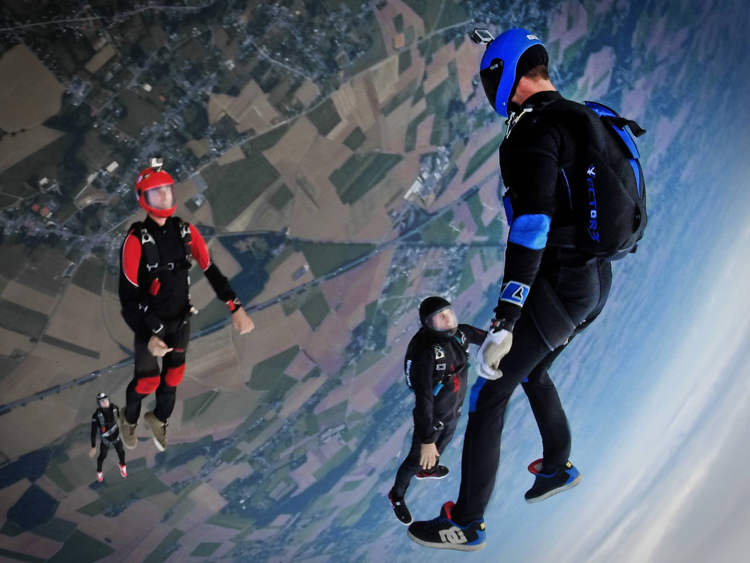Speed skydiving is an extreme sport that requires practicians to jump out of an airplane and try to reach and maintain the highest possible terminal velocity.
Invented in the late 1990s, speed skydiving is recognized as the fastest non-motorized sport on Earth. Competitions begin with skydivers jumping out of an airplane between 13,000ft and 14,000ft (3,962m to 4,267m), then turning 90° from the direction in which the aircraft is traveling, alternately left and right. Next, competitors go into free fall head-first towards the earth, while trying to be as aerodynamic as possible. It is within this stage that they reach the highest speeds. Depending on a variety of factors, including body mass, orientation, and weather conditions, competitors can reach speeds of over 500 km/h (310 mph).

Photo: Filipe Dos Santos Mendes/Unsplash
World speed skydiving champion Kyle Lobpries compared the sensation of speed skydiving with what slipping into a wormhole in a sci-fi movie must feel like, “where all the stars get blurred and turn into lines.” Using only gravity as fuel, speed skydivers achieve speeds greater than those of Formula One cars, with the record for the fastest male skydive currently sitting at 529.77 km/h, and the one for fastest female skydive at 491.99 km/h. Both records were set in October of 2022.
A lot of people believe that the main factor in speed skydiving is weight, but the most successful athletes in this sport will tell you that there is a lot more to it than that. Achieving and maintaining the best posture while literally falling towards the ground at breakneck speeds is essential, but extremely hard to do.
“You get to a certain speed in the dive where you start to wobble,” speed skydiver Maxine Tate told CNN. “And you have to push through that wobble, being very relaxed, but still maintaining body form and not reacting to the wobbles. It’s a real mental and physical game.”
“I’d say that 95 percent of how fast you can go is your skill at staying nice and smooth and going as straight down as possible,” Kyle Lobpries confirmed.
So how do you accurately measure the speed of a human falling out of the sky? Well, in the case of speed skydiving, you need something extremely accurate, but luckily modern technology is a big help. Every speed skydiving competitor uses a FlySight speed measuring device (SMD) on their helmet. Nowadays, these devices use GPS technology, but they previously relied on barometric measuring.
Although physics experts will tell you that terminal velocity will reach its theoretic peak when the force of the air’s resistance becomes equal to the gravitational pull, making further acceleration impossible, skydivers believe that is no cause for concern right now, simply because of the skill involved to reach terminal velocity.
“Because there’s so much skill involved in flying your body, I don’t think that anyone has reached that yet, including myself,” Kyle Lobpries said. “And we have a lot of upward potential before we decide that the sport is limited by terminal velocities. I still think that the skill of flying your body is the main determining factor in who wins.”












